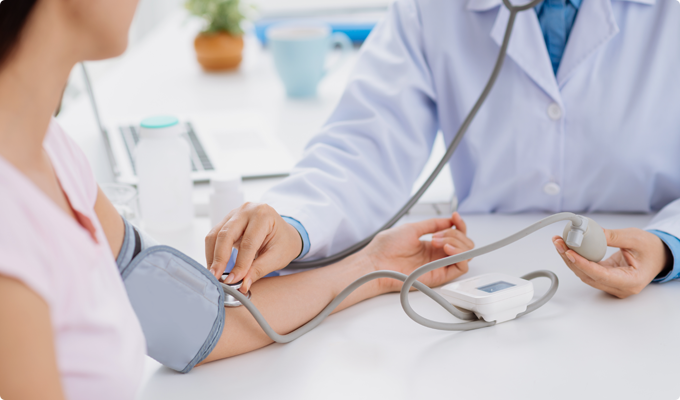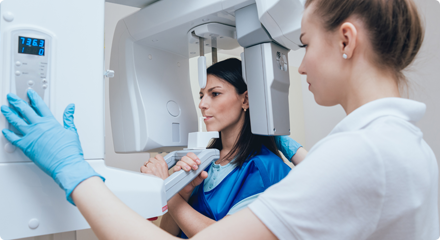



We handle from the simplest flu symptoms to some more advanced complications presented in a cold, and we are able to canalize patients to a proper specialist in case of the symptoms being derived from an underlying health condition.

Sometimes, accidents may look bulky and can cause important pain, let us take the best care for those bruises generated by falls or minor accidents, our physicians take care of minor cuts that may require stitches without causing any unnecessary pain.

A sprained ankle or wrist may not be a life-threatening injury, but definitely a painful one, let us take care of your sprains or strains before they get complicated, and receive the treatment with the best comfort that you should receive from us. We will handle diligently all your healing process to get you back fully recovered as soon as possible.

Eye lesions that do not compromise severely your sight can be diligently treated by our physicians.

Burns and non-acute skin rashes are in our scope of support, we can provide the best treatment to give relief to the irritation derived from those.

We take ear infections that can cause very excruciating pain as well as high fever cases, providing you with the quickest and best-fitted treatment for these symptoms and their root cause.

In Newport Urgent Care, we are incisive and prompt when it comes to the treatment and healing of broken bones. We take care of any injury that may have broken any bones, and provide a timely handling of the lesions in order for you to have those bones recovered stronger than before.

Some infections might be very inoffensive when detected timely, we provide the best diagnosis and treatment in order for you to be affected the least, or otherwise refer you the proper specialist practice to treat your infection.

Stomachache related symptoms can lead to vomit and diarrhea, as well as they can be from an infection among other causes. Any case scenario, we will take care of those so they don’t become progressive.

Low pain in the neck or the back derived from lesions or trauma can be addressed properly at our practice. Our physicians will find the root cause and best-suited treatment for the neck or back injury you suffer from.
An urgent care clinic is the halfway point between your Primary Care practice and the Emergency Room. This means that, when having a minor injury or illness that cannot wait until the next day, Urgent Care is the best practice to visit. An Urgent Care clinic is a specialized practice for illnesses or injuries that won’t present additional symptoms; and it’s a good option when one does not suffer from any underlying health conditions. Some cases that could be easily handled at an Urgent Care clinic are: an earache, a sprained ankle, or a minor cut resulting from a kitchen accident, among many others that an Urgent Care physician is perfectly capable of taking care of.

In Newport Urgent Care, we pride ourselves on having top notch premises, fitted to your medical requirements, from highly advanced on-site labs to flu shots and vaccinations, as well as compelling accommodations for our Adult & Pediatric Care units. Our facilities excel at providing the comfort you deserve in order to have the most pleasant experience when letting us take care of your medical needs.

Our facilities rely on the most advanced lab technology: from COVID-19 testing, including PCR Molecular Test and Antibody Test, covering a possible active viral infection, and even detecting a past infection. Our lab services also include a wide variety of services available to you, serving also for a range of occupational health service.

We provide the best quality in terms of medical imaging, relying on the most advanced X-Ray technology, offering a quick and accurate diagnoses, providing the clearest images, with the possibility of sending the crispest digital copy to your specialist practice.

Newport Urgent Care strives for the best experience when it comes to pediatrics. We know how important is for a child to avoid feeling unsafe in a healthcare unit, since they might not only feel sick, but also very anxious being in a hospital-like environment. When underage patients are in our premises, they will feel the comfort that our staff and facilities provide, giving the best environment for the healthiest recovery process.
When it comes to an Urgent Care practice, it’s important to have a trusted, well-managed staff of physicians. In Newport Urgent Care, we support you during the whole process of the service you need, from getting you the right diagnosis on time, to sorting out the best financial plan possible, we care for you and your health needs.
When it comes to diagnosis and treatment, being accurate and prompt can be critical to have the quickest recovery process from an illness, or preventing the progression of the symptoms. An early intervention can prevent complications derived from the initial condition. Our physicians work thoroughly to get you the best and timely proper diagnosis, our staff is highly qualified to diagnose and treat your case in the fastest way possible. Let us take care of your health needs, we are your safest, and more reliable option.
As we identify the first symptoms in an illness, or feel the initial grief from a lesion, it’s important to visit an urgent care practice before feeling big soreness. In Newport Urgent Care, we will treat diligently every symptom and woe felt from the beginning of your treatment, your healing process and comfort is what we care for the most.
We know that you care for your well-being, not only physically speaking, but financially as well, that’s why we always have a wide variety of financial options to afford the best service we can provide for you. We take insurance plans as well as many other payment options.
We pride ourselves on having top notch quality physicians, board-certified in all areas, all ready to work thoroughly for your comfort and calmness. We want to make sure you receive the help you need, so we do not spare in any details to have the most prepared, professional and committed group of physicians at your disposal.
When you are ill or injured, you may need immediate medical care. Because your primary care physician is not always available and the local hospital emergency room is usually extremely busy (with waiting times of up to several hours), Newport Urgent Care offers an excellent alternative to treat those urgent medical needs. All of our physicians are board-certified and highly experienced, and our well trained and organized staff will provide convenient, personalized and affordable treatment for your injury or illness.
What We Treat
What We Offer
The health and well being of your employees has a direct impact on the health of your business. Accidents, illnesses, sick days, time loss - all affect business efficiency, productivity and profit.
Newport Urgent Care is Orange County’s premier medical provider for Occupational Healthcare - workers’ health, wellness, and injury care. Illness and injuries do cost your company time and money in lost hours, revenue, and medical costs. At Newport Urgent Care, we work diligently to minimize these risks/costs through screening programs, state of the art medical care, and immunization/vaccination services.
Find Out MoreVisiting an Urgent Care clinic is imperative when having an illness or injury that is not life-threatening, but actually requires prompt attention and cannot be attended by your primary care physician. Also, it’s important to mention that, whenever your symptoms are too severe to be treated at home, you have to consider an immediate visit to an Urgent Care center.
You also can consider an Urgent Care clinic for occupational health services, in Newport Urgent Care, we work with a selection of occupational health services, from X-Ray imaging, to any employment health services you need in order to get back the sooner and safer to work.
We are available 7 days a week, with hours from Monday through Friday from 8 a.m. to 8 a.m., and from 8 a.m. to 7 p.m. Saturday and Sunday. We take walk-in patients with non-emergent healthcare conditions and also offer pre-scheduled appointments.
Yes, we take Medicare or any PPO insurance plan to cover the services provided, our administrative staff will guide you through the whole billing process so you don’t have anything to worry about.
If you happen to have additional questions on the payment options, you can also give us a call at 949-752-6300.
Yes, and make a prior check with your insurance company before walk-in to confirm everything is in order before being billed.
Yes, we are located at 1000 Bristol St N #1b, Newport Beach, with free parking service in the commercial area.
We currently provide different Covid testing options:
Molecular PCR test: This test uses a sample from the patient, typically from the nose or throat, and amplifies the genetic material of the virus. This test is highly accurate but takes longer to get results, typically a few hours to a day.
Rapid antigen test: This test uses a sample from the patient, typically from the nose, and looks for specific proteins from the virus. Results are available within 15-30 minutes, but the accuracy is lower compared to the molecular PCR test.
Antibody test: An antibody test for COVID-19, also known as a serology test, is different from the molecular PCR and rapid antigen tests as it measures the presence of antibodies in a person’s blood, rather than detecting the presence of the virus itself. This test will be better if you have already presented symptoms or given a positive active infection test.
You can make an appointment through the phone at 949.752.6300 or just walk-in, either way, our staff will take the best care of your needs.
Self-payment and insurance are our available payment options. Self-pay prices may include an office visit charge unless noted. For additional information, you may contact us at 949.752.6300.
It would be best if you went to urgent care for non-life-threatening conditions like minor injuries, mild illnesses, or symptoms that are not fully understood but don’t pose an immediate severe risk. Choose the emergency room for life-threatening or severe conditions requiring immediate and advanced treatment, like severe bleeding, choking, severe chest pain, head injuries with confusion or unconsciousness, spine or neck damage, or prolonged seizures.
Urgent care can help with low back pain by conducting a comprehensive medical evaluation to diagnose the cause. This includes reviewing your medical history and lifestyle, performing a physical exam to assess spinal mobility and areas of tenderness, and identifying any systemic diseases, psychological stresses, or risk factors.
You should go to urgent care for a fever if it is higher than 102°F, lasts more than three days, worsens and won’t break, or is accompanied by symptoms like discomfort, ear pain, nausea and vomiting, diarrhea, or a sore throat.
Urgent care is needed for a cold or the flu when symptoms are severe or don’t improve with self-care. Symptoms like persistent high fever, severe cough, breathing difficulties, or dehydration indicate a need for medical evaluation. Urgent care can provide a diagnosis, recommend treatment, and prescribe medication if necessary.
Yes, urgent care facilities generally offer STD testing, which includes a range of sexually transmitted diseases. However, it’s important to note that Newport Urgent Care provides treatment for STDs but does not offer testing services. Those experiencing symptoms or at high risk should seek testing at appropriate medical facilities and can then approach Newport Urgent Care for subsequent treatment options.